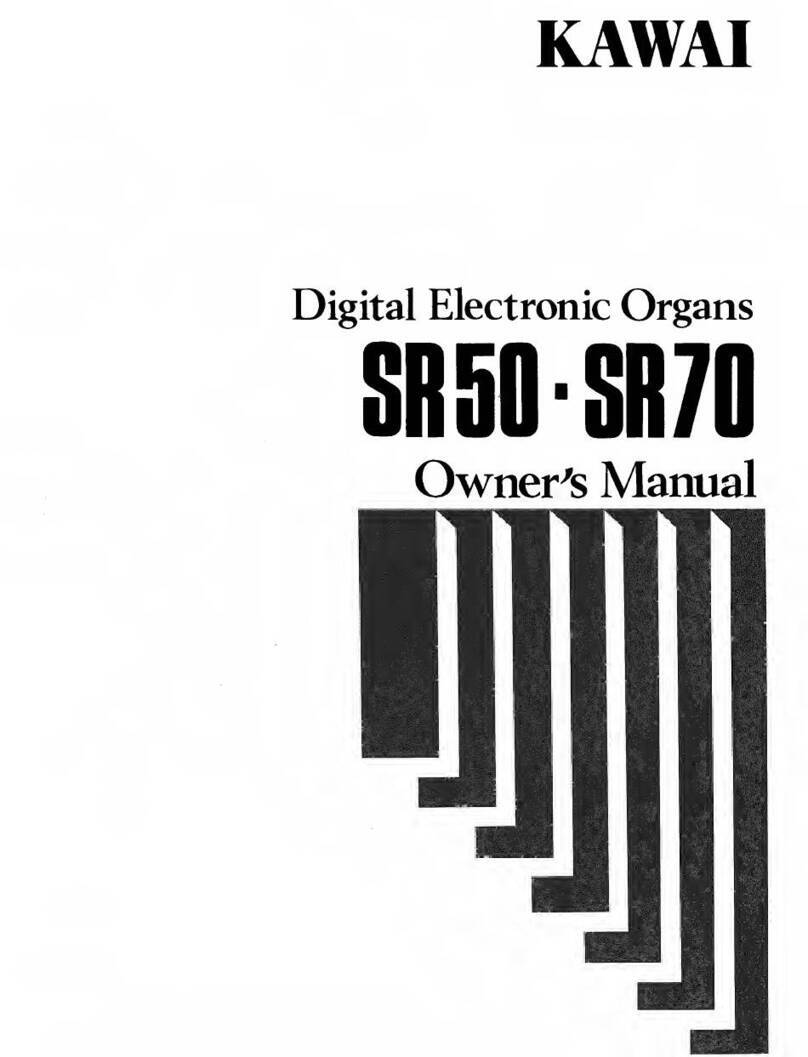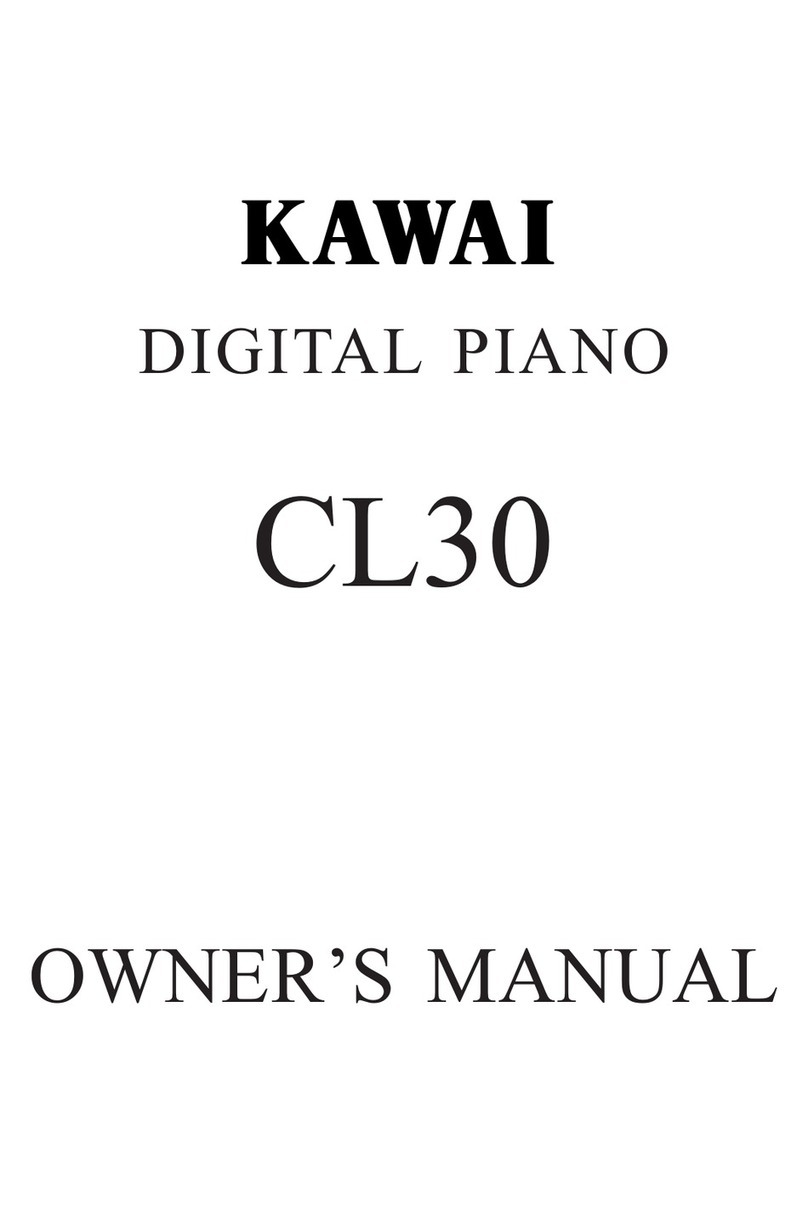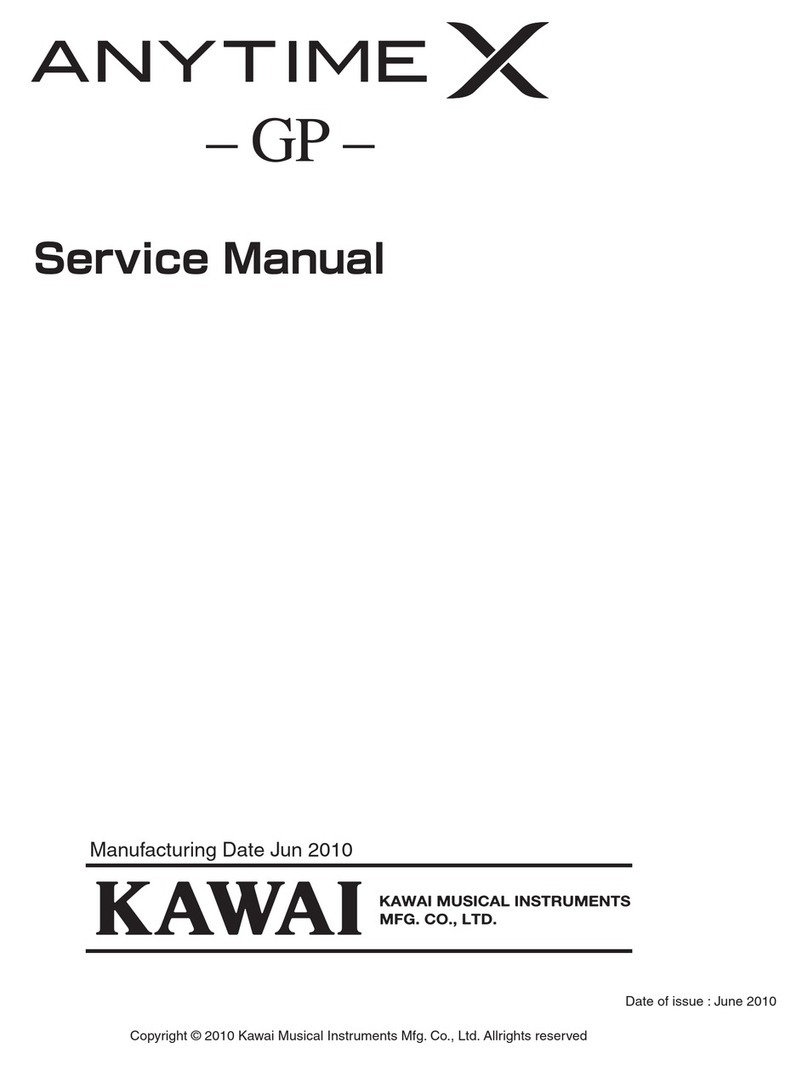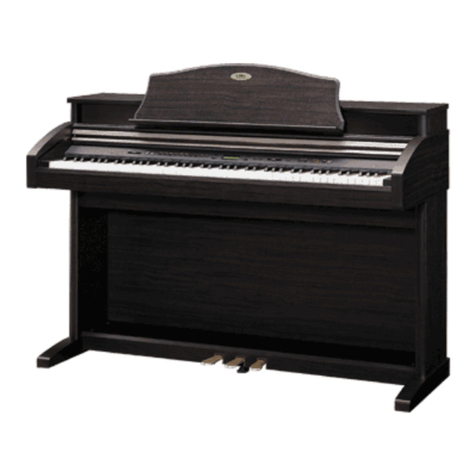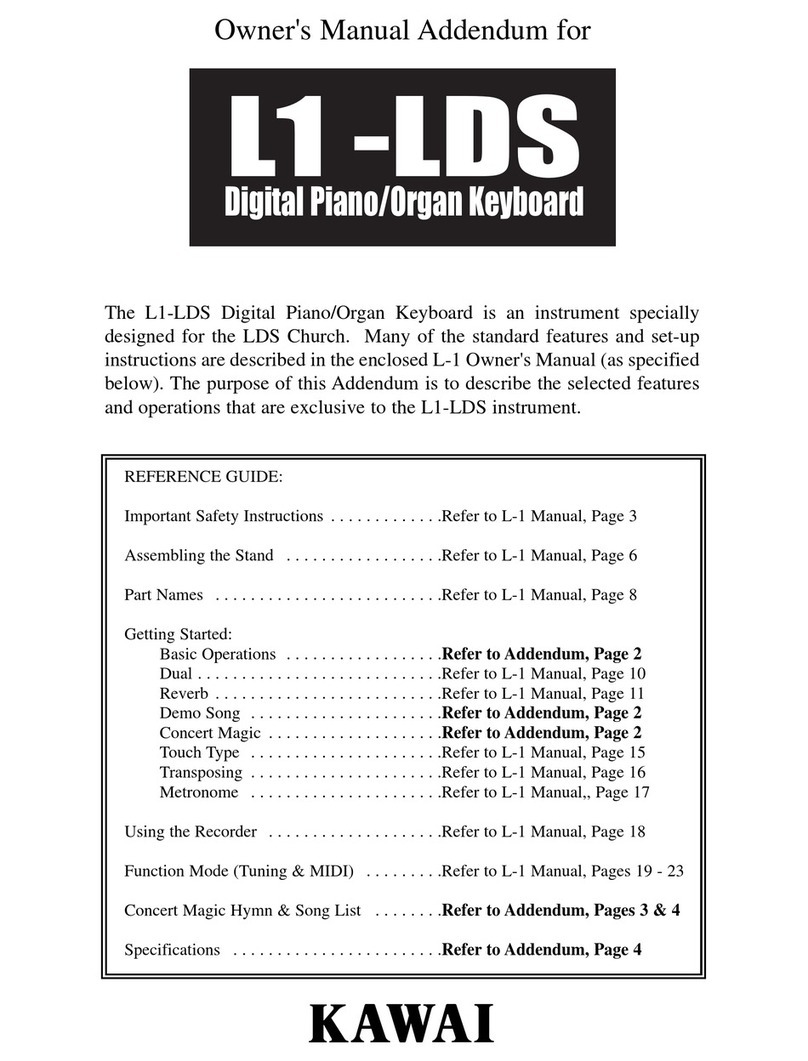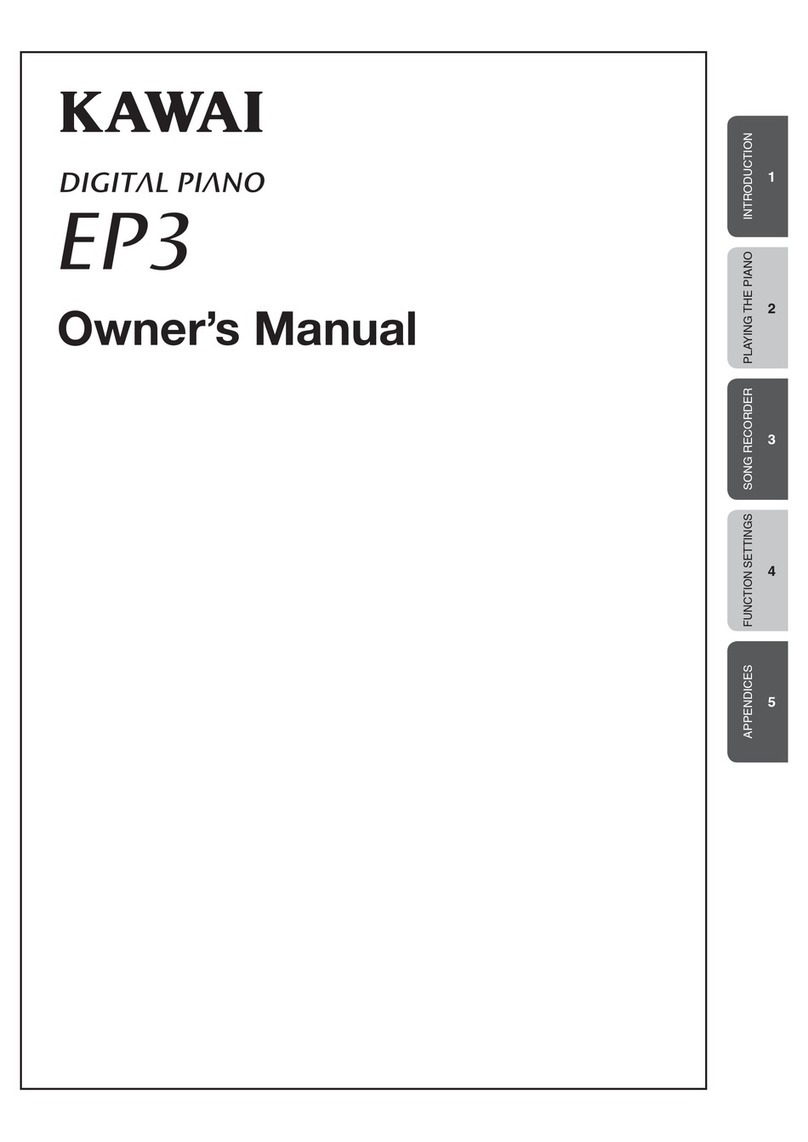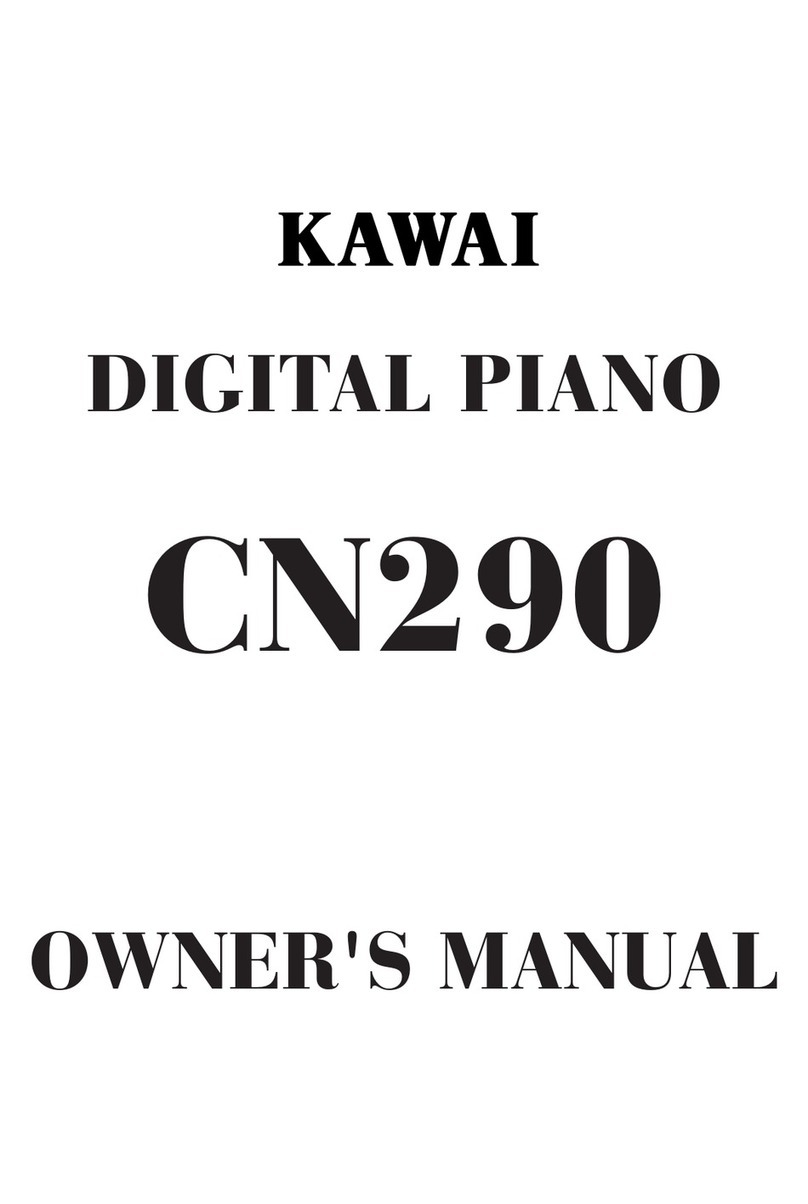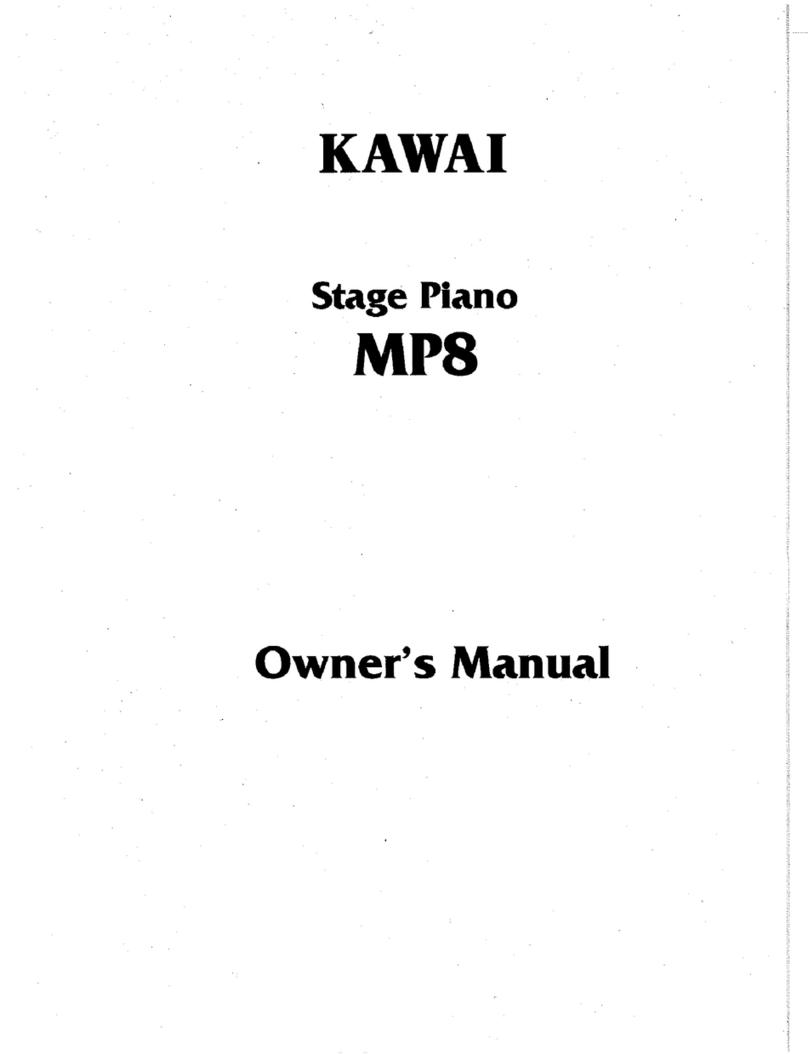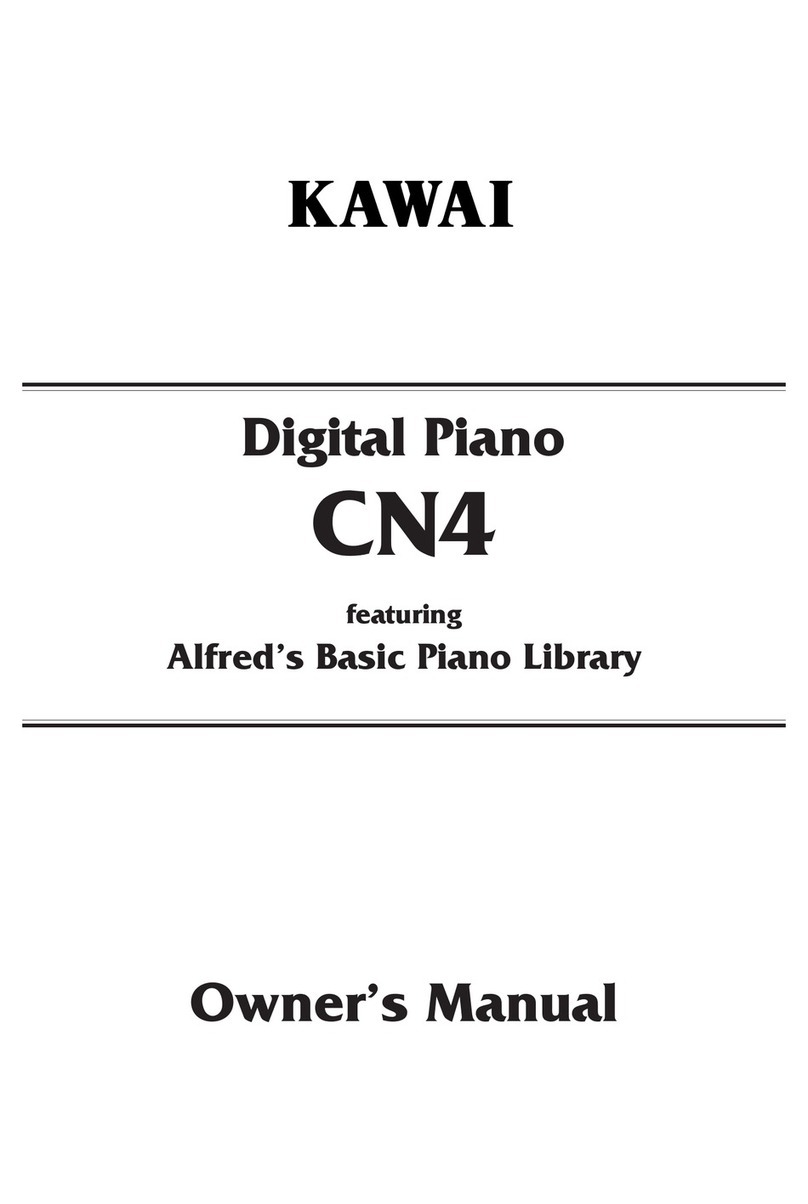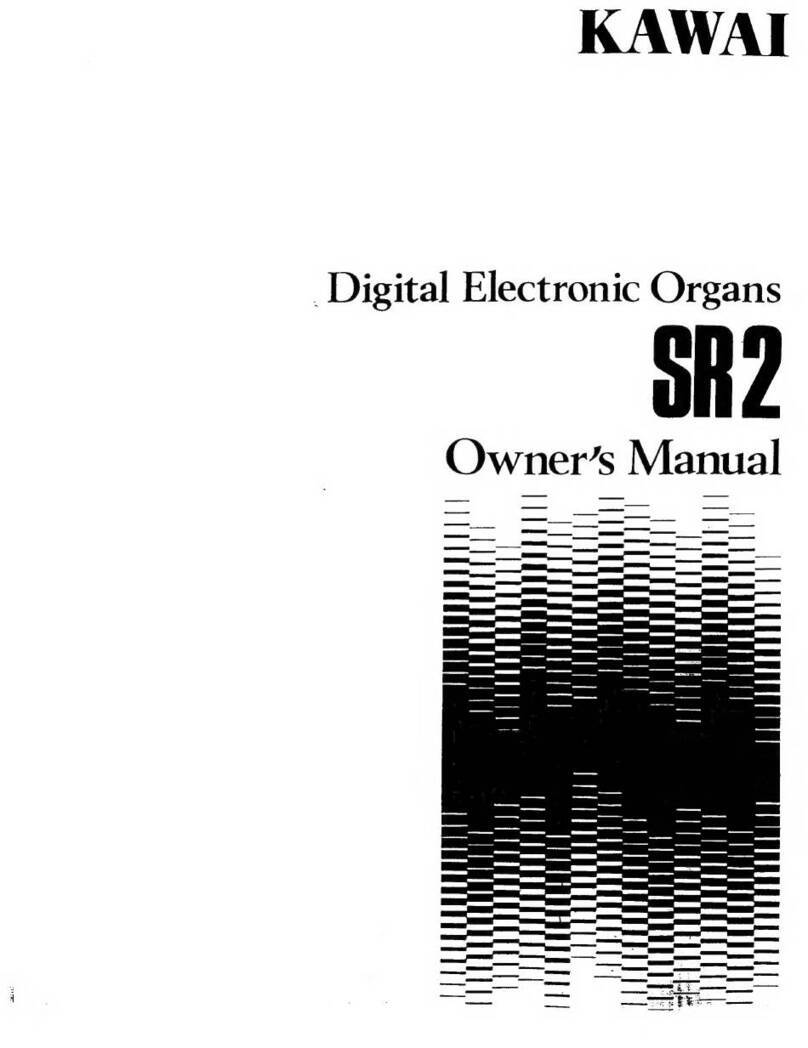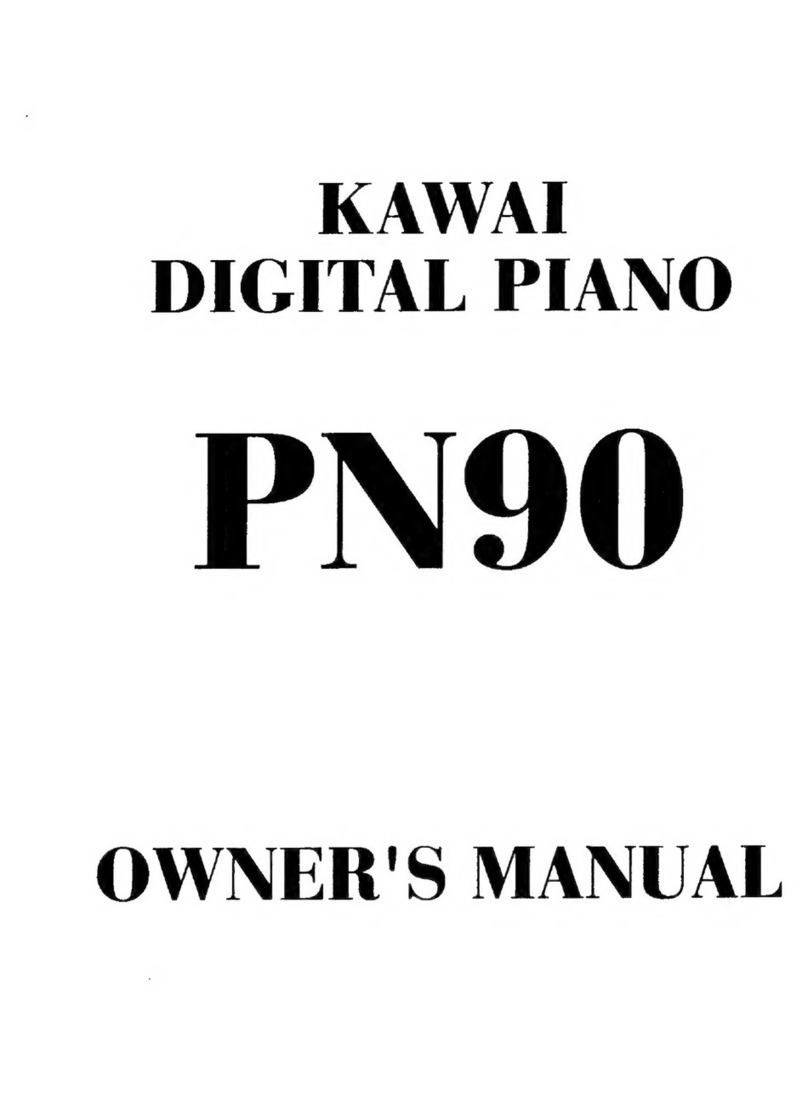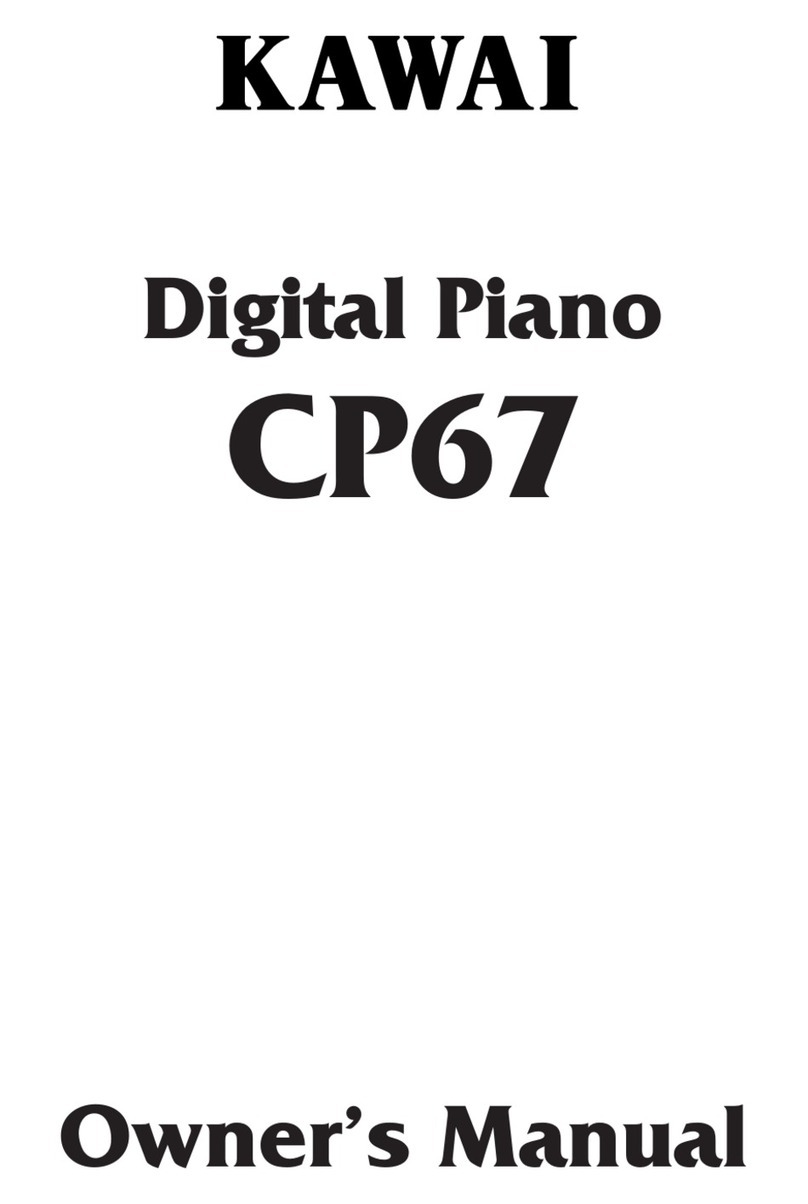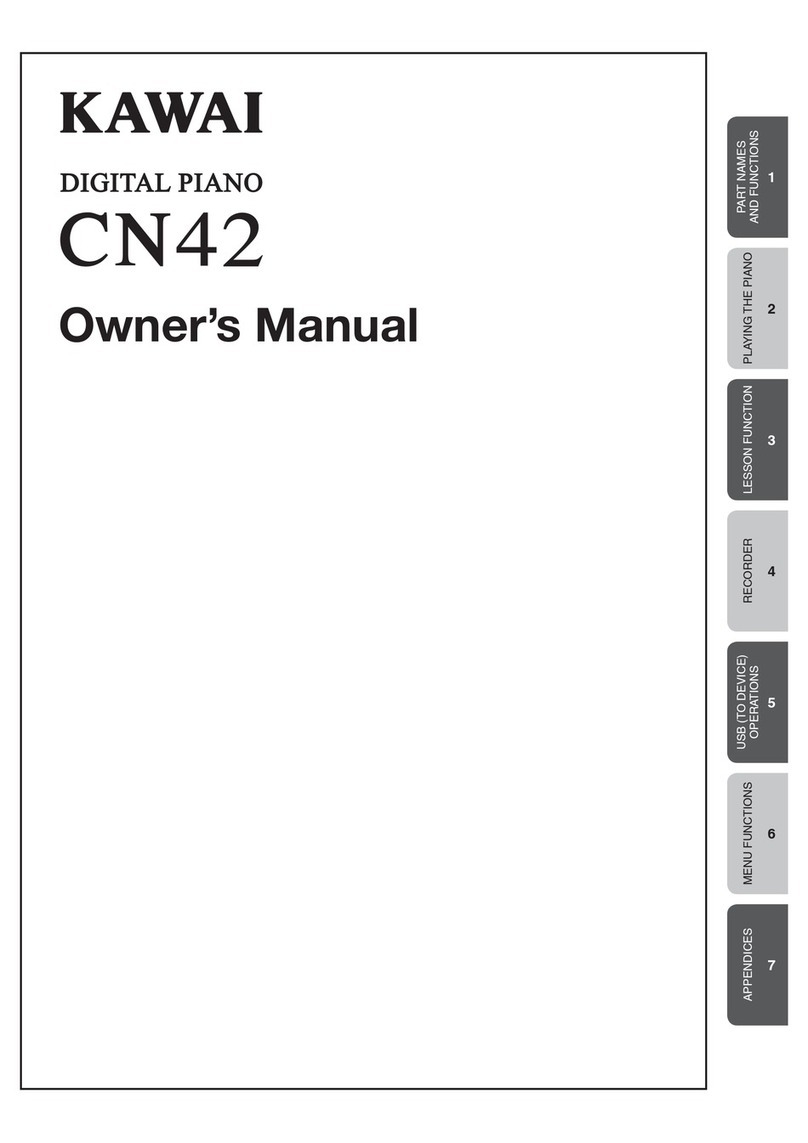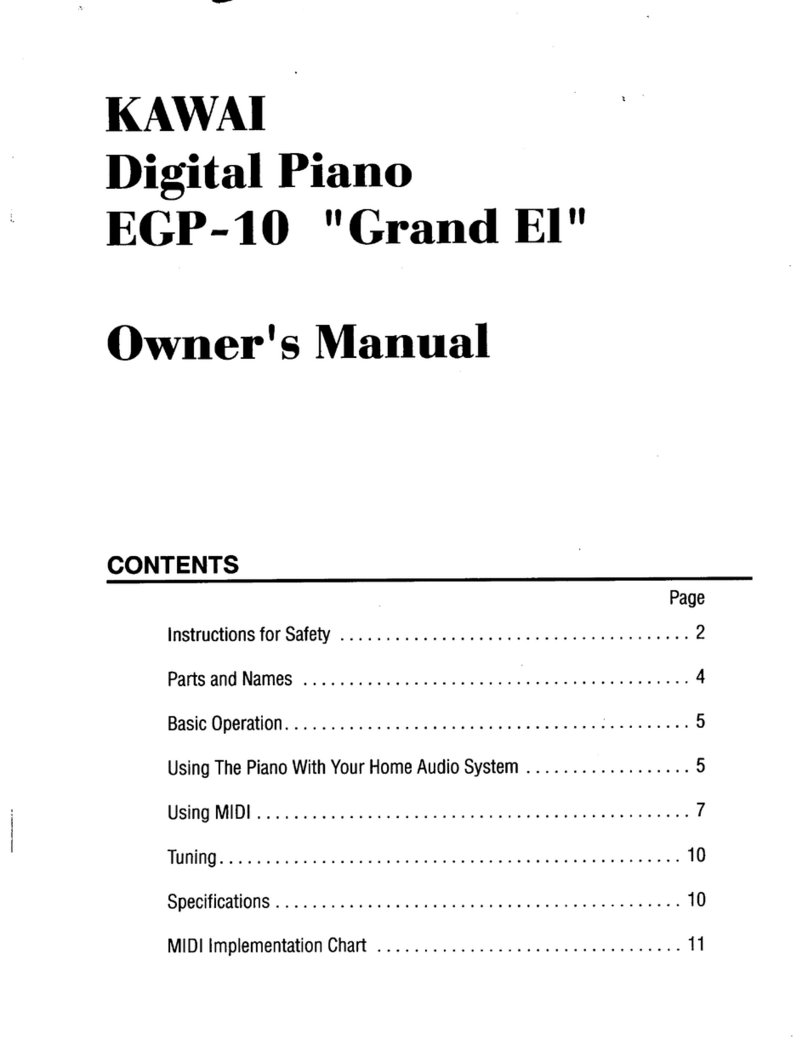
KAWAI
|
ELECTRONIC
KEYBOARD
A120
X130
OWNER'S
MANUAL
Table
of
Contents
IMPORTANT
SATSty
IMSEUCTHONS
sits
cccsviciwes
daetentsnacsivabecentapevieetiantsantinaisunatnes
1
Overall
Diagram
and
Explanation
.....cccccsccsssesscscccsscssssssssesssessersesssessssneeeas
5
Basic
Operations
DGIOCUAG
SOUNCS
anise
dacinca
te
aseetesvariaiserenu
eine
tetensedatisenonenwess
7
SOC:
NYE
-SEVIGS
wistdsstatonievncssareateinaniarendatnnaenanvecuernenss
7
Using
AuUto-ACCOMPANIMONE
...ccescccescsesssensseseersssersssssrsssssetsnsenseareees
8
Using:
The
Real-time
Recorder
viiivad
ccicistcnrunwwininuanawenunwe
)
Advanced
Operations
POC
OC
sriesd
ia
evatectintscvesusces
ences
asienan
us
eiediaaneeni
eendavsisiie
10
70)
111]:
[0]
(ce
eo
PE
10
USING
MIDI
(EOF
A130
OMIW)
scsssaseccutavis
tenctavncviscansananduicameetageaneeines
12
USING
SVStGM
FUN
CHOMNG
saasscciiasdadsaiviecvvesonaseisncoeintasacrcwnraniecnwaderounn
13.
Creating
Songs
with
an
External
MIDI
Sequencer
...wceeeseens
15
Sending
Recorder
Data
to
an
External
Sequencer
via
MIDI...
cues
16
Appendix
Drum
Sound
List
(Key
Numbers)...
cccssssssstesssssneseeeteeeen
16
OF
ON
LIST
vacaesticteclveneatscvenieantsntaataateanrsctenciacsuntsbac
eameemenccaueteaael
17
SO
SCITICAT
ONS
raverssessarcbiasdestesannetansinincelbariiasanbiontaurataaneiauveranednceicns
17
MIDI
Implementation
Chart...
ccccssssesecserccssessessnesecssersersersaeseesaesenes
18
